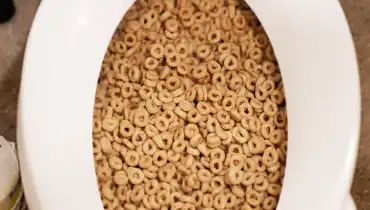They are making several good pointers related to Is it safe to flush food (especially rice) down the toilet? in general in this content in the next paragraphs.

Intro
Many individuals are usually faced with the dilemma of what to do with food waste, particularly when it comes to leftovers or scraps. One typical concern that develops is whether it's okay to purge food down the commode. In this short article, we'll explore the reasons that individuals may think about flushing food, the consequences of doing so, and alternative techniques for correct disposal.
Reasons that people may consider purging food
Lack of understanding
Some individuals may not be aware of the potential harm triggered by flushing food down the toilet. They might mistakenly believe that it's a safe method.
Convenience
Flushing food down the commode might feel like a fast and very easy solution to getting rid of unwanted scraps, especially when there's no nearby trash bin readily available.
Negligence
In some cases, individuals may merely choose to flush food out of sheer idleness, without thinking about the repercussions of their actions.
Consequences of flushing food down the commode
Ecological effect
Food waste that winds up in waterways can add to air pollution and injury water ecosystems. In addition, the water made use of to flush food can stress water sources.
Pipes problems
Purging food can lead to stopped up pipelines and drains, creating pricey plumbing repair services and inconveniences.
Sorts of food that should not be purged
Fibrous foods
Foods with coarse appearances such as celery or corn husks can obtain entangled in pipelines and trigger clogs.
Starchy foods
Starchy foods like pasta and rice can absorb water and swell, causing obstructions in pipelines.
Oils and fats
Greasy foods like bacon or food preparation oils should never be flushed down the toilet as they can strengthen and cause obstructions.
Correct disposal techniques for food waste
Using a garbage disposal
For homes geared up with garbage disposals, food scraps can be ground up and purged with the plumbing system. Nevertheless, not all foods appropriate for disposal in this way.
Recycling
Certain food product packaging products can be recycled, minimizing waste and lessening ecological effect.
Composting
Composting is an environmentally friendly way to throw away food waste. Organic materials can be composted and made use of to enrich soil for gardening.
The value of appropriate waste monitoring
Lowering ecological harm
Proper waste management methods, such as composting and recycling, aid minimize contamination and preserve natural resources for future generations.
Securing plumbing systems
By preventing the method of flushing food down the commode, homeowners can stop costly plumbing repair work and keep the integrity of their plumbing systems.
Conclusion
Finally, while it might be tempting to purge food down the toilet for comfort, it is essential to comprehend the potential effects of this action. By embracing correct waste monitoring methods and dealing with food waste responsibly, people can contribute to healthier plumbing systems and a cleaner atmosphere for all.
FLUSH FOOD DOWN THE TOILET?
FLUSHING FOOD CAN CAUSE BLOCKED DRAINS IN YOUR HOME
All of the plumbing fixtures in your home are connected to the same sewer pipe outside of your home. This outdoor sewer pipe is responsible for transporting all the wastewater from your home to the Council sewer mains. Even small pieces of food that go down the kitchen sink can cause problems for your sewer. It should therefore be obvious that flushing larger bits of food, such as meat, risks a clog in either the toilet itself or the sewer pipes. Flushing greasy food is even more problematic because oil coagulates when it cools, coating the interior lining of your pipes.
THE TOILET IS NOT A BIN
Food isn’t the only thing that people shouldn’t be flushing down the toilet. People use the toilet to dispose of all kinds of things such as tampons, makeup wipes, dental floss, kitty litter and even underwear. Water goes to great lengths to educate residents about the high costs and stress placed on wastewater treatment systems simply from people flushing the wrong stuff down the toilet. It costs taxpayers millions of dollars each year, and homeowners thousands in blocked drain repairs.
FLUSHING FOOD IS A WASTE OF WATER
Flushing food is a waste of our most precious resource - water. In June this year Level 1 water restrictions were introduced to protect water supply from drought conditions. Much of New South Wales continues to be affected by prolonged drought with recent figures revealing up to 97 per cent of the state remains in drought. Depending on whether you have a single or dual flush toilet, every single flush uses between five and 11 litres of water. In the current climate this is a huge amount of water to be wasting on flushing food that should be placed in the bin (or better yet, the compost).
https://www.jabplumbingsolutions.com.au/blog/can-you-flush-food-down-the-toilet

As a serious person who reads about Think Twice Before Flushing Food Down Your Toilet, I was thinking sharing that excerpt was really helpful. Are you aware of another person who is involved in the niche? Why not promote it. I treasure reading our article about Flushing Food Down the Toilet?.
Visit Link
Comments on “Can You to Flush Food Down the Toilet?”